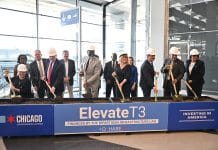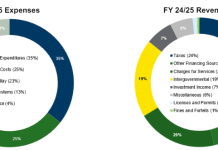More than a quarter of construction firms responding to an online survey conducted by the Associated General Contractors (AGC) of America in early April reported they had furloughed or terminated jobsite workers because of the coronavirus pandemic. The finding contrasts starkly with the association’s analysis of government data released earlier this month. that showed a majority of the nation’s metro areas added construction jobs through February.
Here is employment data for several Illinois communities before the COVID-19 crunch, including the employee numbers in February 2019, February 2020, the percentage change and the actual number change, and the community’s overall ranking nationally.
- Statewide Construction 198,900 198,100 -0.4% -800
- Statewide Mining, Logging, and Construction 206,700 205,600 -1% -1,100
- Bloomington, IL Mining, Logging, and Construction 2,600 2,400 -8% -200 339
- Champaign-Urbana, IL Mining, Logging, and Construction 3,300 3,400 3% 100 143
- Chicago-Naperville-Arlington Heights, IL Div. Construction 117,500 119,300 2% 1,800 173
- Danville, IL Mining, Logging, and Construction 500 400 -20% -100 358
- Davenport-Moline-Rock Island, IA-IL Mining, Logging, and Construction 8,900 9,100 2% 200 173
- Decatur, IL Mining, Logging, and Construction 2,800 2,800 0% 0 218
- Elgin, IL Div. Construction 12,100 12,200 1% 100 199
- Kankakee, IL Mining, Logging, and Construction 1,100 1,100 0% 0 218
- Lake County-Kenosha County, IL-WI Div. Construction 13,800 13,900 1% 100 199
- Peoria, IL Mining, Logging, and Construction 6,400 6,400 0% 0 218
- Rockford, IL Mining, Logging, and Construction 4,700 4,800 2% 100 173
- Springfield, IL Mining, Logging, and Construction 3,000 2,500 -17% -500 356
- St. Louis, MO-IL Mining, Logging, and Construction 63,000 64,500 2% 1,500 173
“The metro-level employment data show that construction was still growing strongly in many parts of the country in February, immediately before the pandemic forced contractors to shut down projects and lay off workers,” said Ken Simonson, the association’s chief economist. “In contrast, our survey, completed less than a week ago, found that a majority of respondents had been told by owners or government agencies to cease work.” Click here for additional video comments from Mr. Simonson regarding last week’s survey.
Simonson added that 27 percent of respondents to the survey reported they have furloughed or terminated construction workers. In addition, 55 percent of the firms said they had been directed to delay or cancel projects by their clients, while 26 percent reported they had been directed to stop construction activities by government officials. The survey was conducted from March 30 through April 2 and drew 1,294 responses.
The association’s analysis of metro employment data showed that construction employment increased between February 2019 and February 2020 in 217 (61 percent) of metro areas, declined in 89, and held steady in 52. The Dallas-Plano-Irving, Texas metro added the most construction jobs over 12 months (12,000 jobs, 8 percent), while the largest percentage increase occurred in Walla Walla, Wash. (22 percent, 200 jobs). The Orange-Rockland-Westchester, N.Y. area lost the most construction jobs over the year (-4,400 jobs, -10 percent). The largest percentage decline occurred in Danville, Ill. (-20 percent, -100 jobs).
Association officials said the new February metro employment data, when compared to the recent survey results, demonstrates how quickly construction market conditions have deteriorated because of the coronavirus pandemic. They urged federal officials to begin crafting measures to support the post-pandemic recovery, including funding new infrastructure investments, compensating contractors for cancelled or delayed federal projects and supporting hard-hit pension plans many construction workers rely on for health and retirement benefits.
“The deterioration of the construction market in many parts of the country has been both swift and severe,” said Stephen E. Sandherr, the association’s chief executive officer. “Unless Washington officials begin crafting a comprehensive recovery plan that includes measures to help the industry, the industry will continue to suffer even after the pandemic passes.”
View AGC’s coronavirus resources and survey. View comparative data here. View the metro employment data, rankings, top 10, and map.






